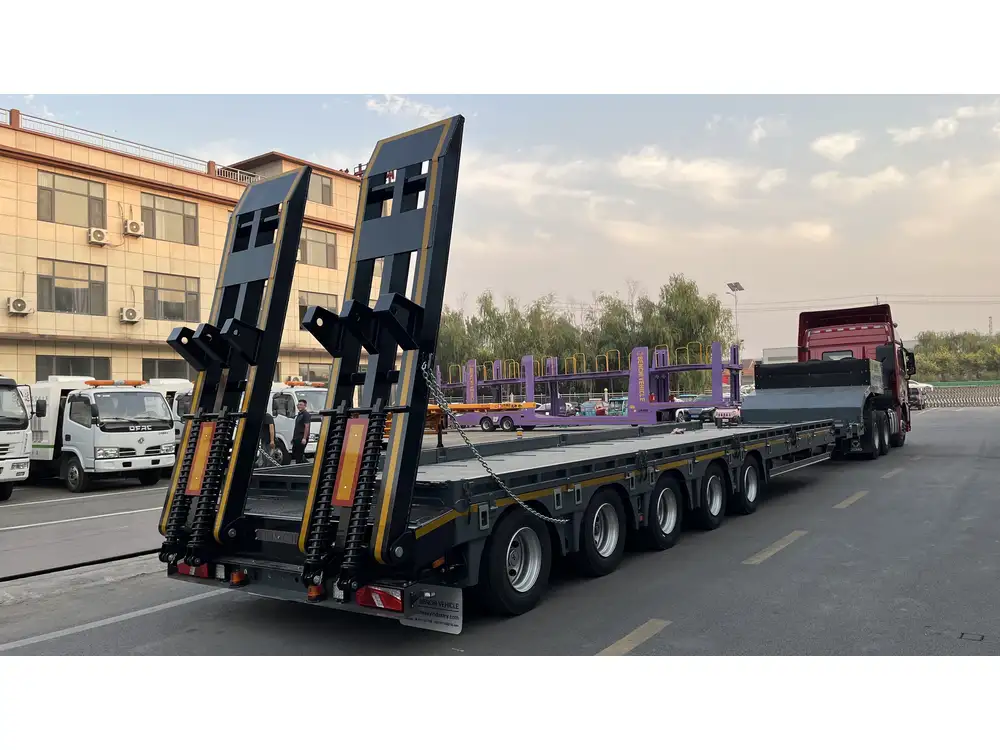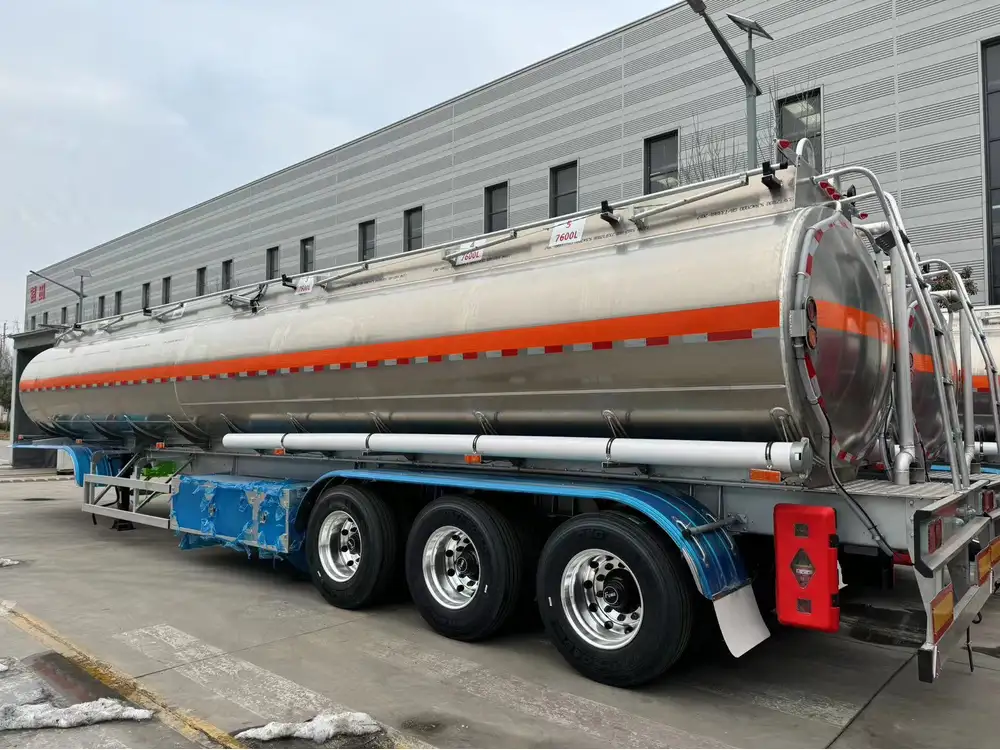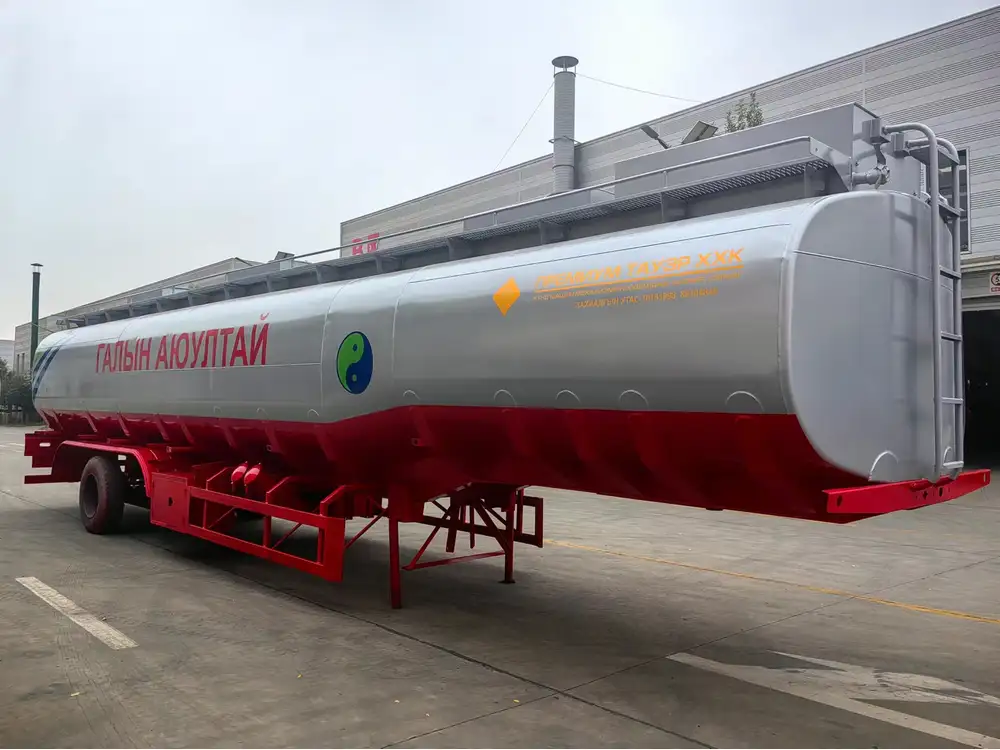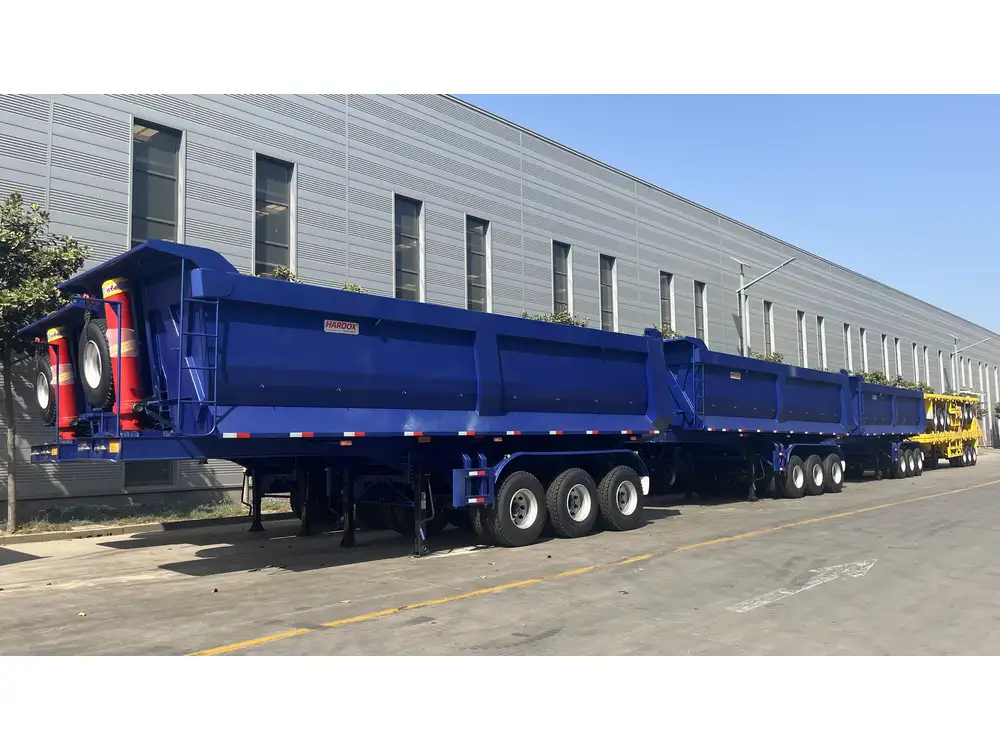When you observe a tractor trailer rolling down the highway, you might notice the tanks mounted on its flanks. These tanks are not mere aesthetic additions; they serve essential functions that are crucial for the efficient operation of the vehicle. In this article, we will explore the various types of tanks commonly found on semi-trailers, their purposes, and the implications for truck drivers and operators.
Fuel Tanks: The Lifeblood of Long Hauls
What Are Fuel Tanks?
Fuel tanks are the most recognizable tanks you will find on the sides of tractor trailers. These cylindrical or rectangular containers are typically constructed from durable materials such as aluminum or steel to withstand the rigors of long-distance transport.

Capacity and Design Variations
- Standard Capacity: Fuel tanks typically range in capacity from 100 to 300 gallons, depending on the truck’s design and intended use.
- Dual Tanks: Many long-haul trucks are equipped with two fuel tanks to increase range, allowing drivers to travel further without the need for frequent refueling.
- Side Mounting: The tanks are usually mounted on the side of the trailer for optimum weight distribution and ease of access.
Importance of Fuel Efficiency
With rising fuel prices, efficient fuel management is paramount for logistics businesses. Understanding the tank size and fuel consumption patterns can drastically affect overall operational costs.
Defining the Other Essential Tanks:

1. AdBlue Tanks: Ensuring Compliance with Emission Standards
What is AdBlue? AdBlue is a solution composed of urea and deionized water, utilized in diesel engines equipped with Selective Catalytic Reduction (SCR) systems to reduce nitrogen oxide (NOx) emissions.
Tank Specifications
- Size: Typically, AdBlue tanks hold about 5-20 gallons, with some larger trucks having up to 50 gallons.
- Placement: AdBlue tanks are often integrated on the opposite side of the fuel tanks, ensuring balanced weight distribution.
2. Hydraulic Fluid Tanks: The Heart of the Trailer’s Operation
Understanding Hydraulic Systems Hydraulic systems in trailers are often employed for various applications, such as operating lifts, brakes, or extending trailers.
Features of Hydraulic Fluid Tanks
- Material: Usually constructed from high-strength steel or aluminum to prevent leaks.
- Capacity Range: These tanks can range from 10 to 50 gallons or more, depending on the system’s complexity and function.
3. Fresh Water Tanks: For Comfort on Long Trips
Functionality Freshwater tanks are used for carrying clean water, essential for drinking and other daily needs of drivers during long hauls.
Design Characteristics
- Capacity: Usually found in sizes ranging from 5 to 20 gallons.
- Installation: These tanks may be fitted with a dedicated water pump and filtration system for enhanced usability.

Tank Maintenance: Ensuring Optimal Performance
Importance of Regular Maintenance
Regular inspections and maintenance of tanks are crucial in preventing leaks, corrosion, and system failures.
Maintenance Checklist
- Visual Inspections: Regularly check for signs of rust or deterioration.
- Leak Testing: Employ pressure testing to ensure integrity.
- Cleaning Routines: Flush and clean tanks periodically to prevent buildup and contamination.

Impact of Tank Size on Trucking Operations
Fuel Efficiency and Cost Management
The size and capacity of fuel tanks directly influence a trucking company’s operational efficiency. Larger tanks might allow fewer stops for fuel, saving time, but they can also increase overall weight, potentially affecting fuel consumption.
| Tank Size | Advantages | Disadvantages |
|---|---|---|
| Small Tank | Lightweight, better fuel efficiency | Frequent refueling stops |
| Medium Tank | Balanced refueling frequency and weight | Might still require multiple stops on long trips |
| Large Tank | Fewer stops, ideal for long hauls | Increased weight could affect fuel efficiency |
Regulatory Considerations
Different regions have specific regulations concerning vehicle weights and emissions, which can directly impact tank choices. Understanding compliance can aid in effective fleet management.

Troubleshooting Common Issues with Tanks
Problem: Leaky Tanks
Symptoms: Noticeable fuel or fluid drops under the tank area. Solutions:
- Identify the source of the leak.
- Use sealants for minor leaks; replace the tank for significant damage.
Problem: Contamination of Liquids
Symptoms: Strange smells or colors in the hydraulic fluid or AdBlue. Solutions:
- Replace contaminated fluid.
- Clean the tank before refilling.

Problem: Inefficient Fuel Usage
Symptoms: Higher than normal fuel consumption. Solutions:
- Check for leaks.
- Inspect the engine and fuel systems for potential faults.
Innovations in Tank Design: Looking Towards the Future
Lightweight Materials
Advancements in material science have led to the introduction of lightweight composite tanks. These innovations help improve a vehicle’s payload capacity without compromising durability.

Smart Tank Technology
Emerging technologies include smart sensors that monitor fuel levels, track consumption, and detect leaks in real-time, offering an integrated approach to tank management and operational efficiency.
Conclusion: The Essential Role of Tanks in Trucking
In summary, the tanks on the side of a tractor trailer are integral to its functionality and efficiency. They serve diverse purposes—from providing fuel to managing fluid emissions and sustaining the comfort of the driver. Understanding these components not only enhances operational efficiency but also aligns trucking businesses with regulatory considerations and future innovations.
Engaging with tank maintenance, monitoring innovations, and managing their complexities will empower trucking companies to navigate the challenges of the industry successfully. The result is a streamlined operation capable of adapting to the evolving demands of logistics and transportation.
In an industry driven by precision and performance, recognizing the value of every component, including these tanks, is vital to sustained success.



